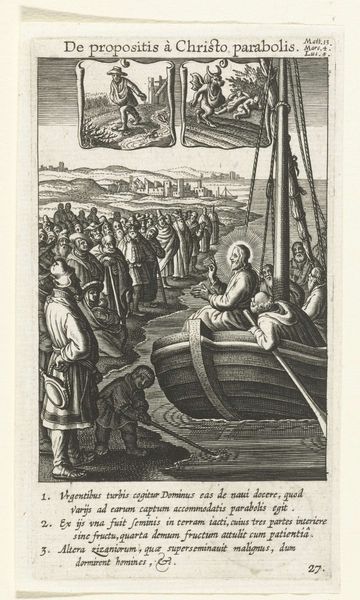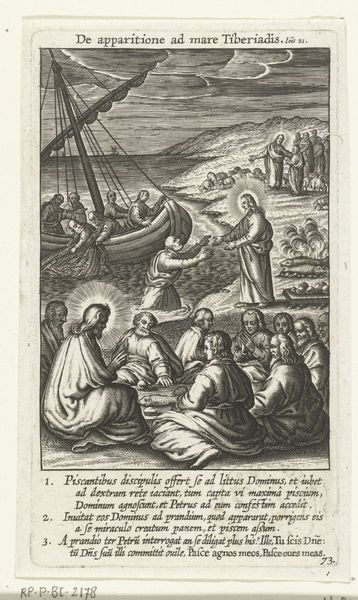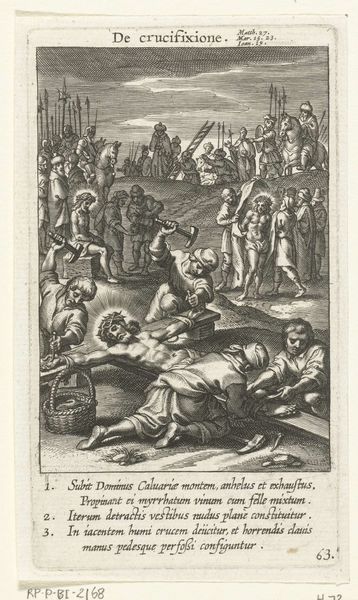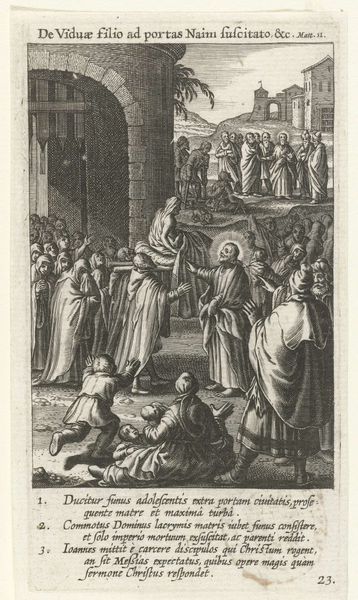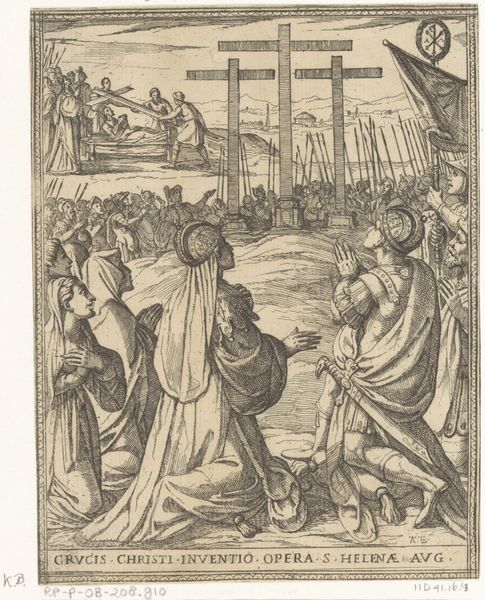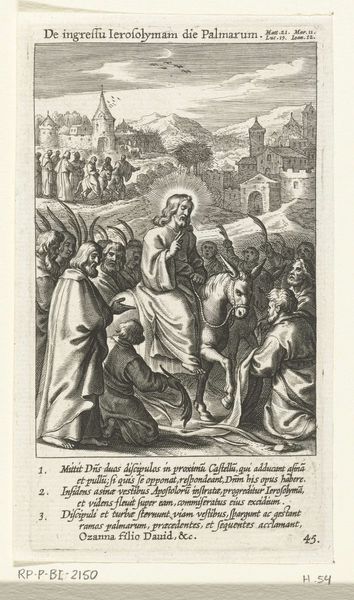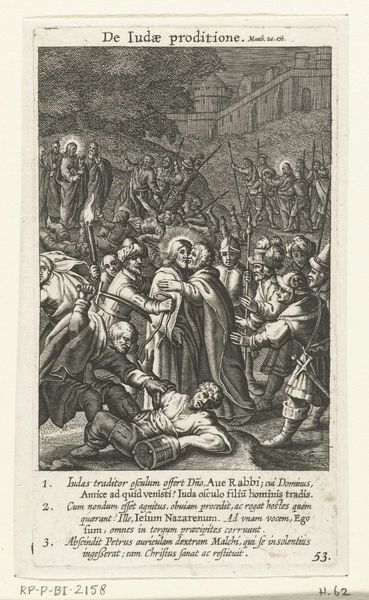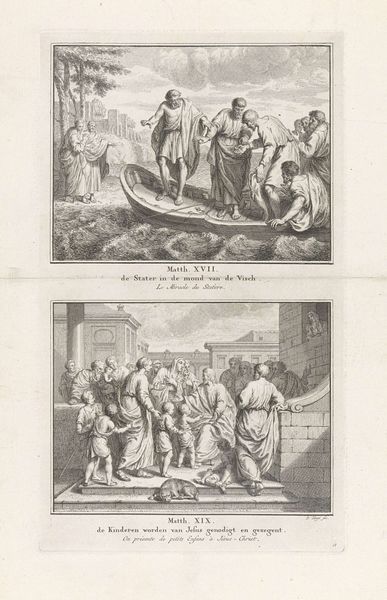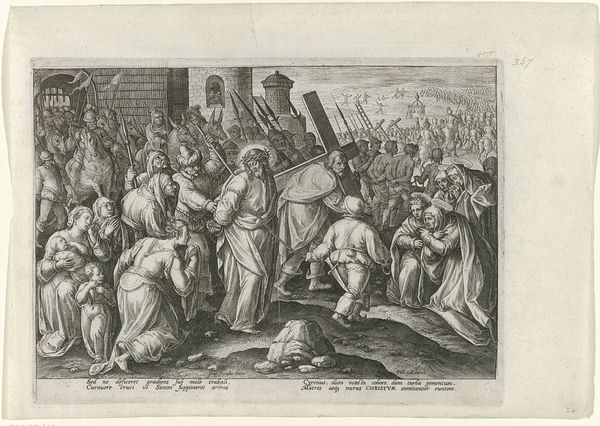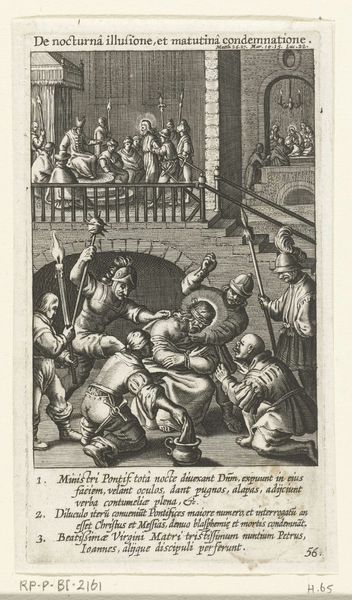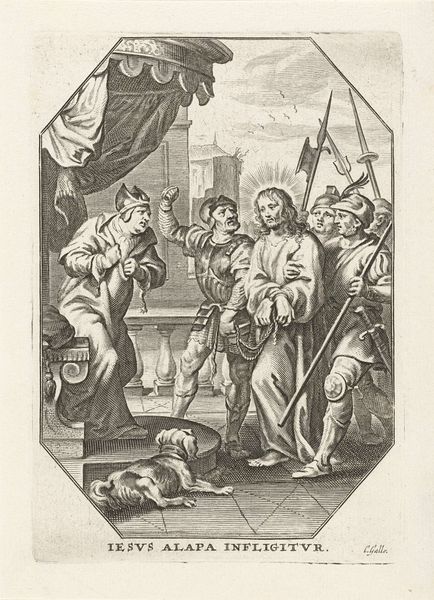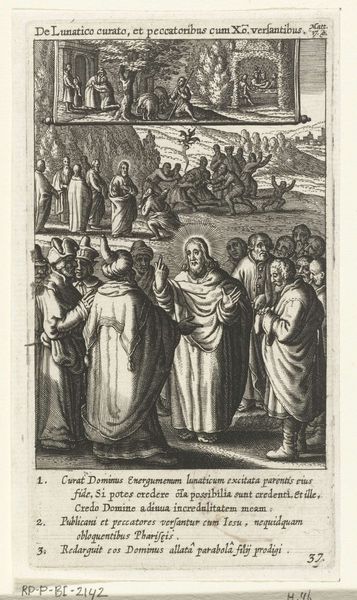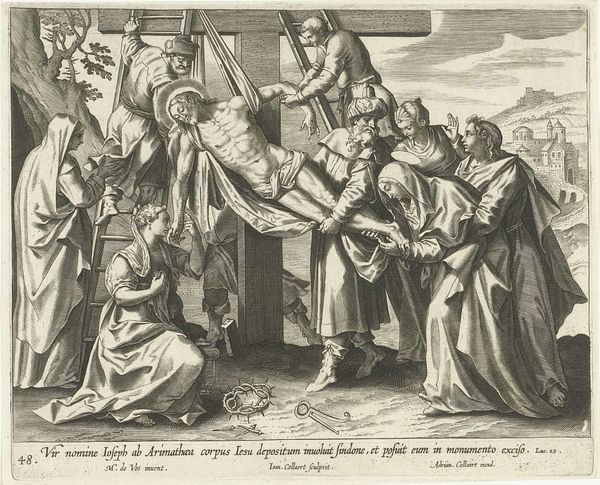
Christus geneest een bezeten man voor het oog van de Farizeeën en schriftgeleerden 1590 - 1622
0:00
0:00
print, engraving
#
narrative-art
#
baroque
# print
#
pen illustration
#
old engraving style
#
figuration
#
line
#
history-painting
#
engraving
Dimensions: height 133 mm, width 73 mm
Copyright: Rijks Museum: Open Domain
Curator: I’m immediately struck by the drama and density of this composition. There’s a palpable tension in the interplay of light and shadow, figures contorting within a clearly defined pictorial space. Editor: Indeed. The Rijksmuseum holds this engraving created between 1590 and 1622 by Boëtius Adamsz. Bolswert; it depicts Christ healing a possessed man before Pharisees and Scribes. To me, the layers of symbolism are even more potent than the dramatic rendering. The man, twisted and supported by others, serves as an archetypal representation of human suffering and vulnerability. Curator: Structurally, the print employs line work characteristic of Baroque printmaking. Note the use of cross-hatching to build volume and evoke a sense of depth, pulling us into the scene. This allows for an engagement with both the spectacle and the finer details of the performance. Editor: Absolutely, and let’s consider the meaning of that performance. Christ stands centrally, bathed in a sort of halo of light, symbolizing divine power and healing. This opposes the chaotic turmoil enveloping the possessed man, thus underscoring the Christian message of deliverance and the triumph over darkness, an iconography prevalent in art across centuries. The act serves as a pivotal cultural marker of the Messiah's abilities as witnessed by groups of onlookers. Curator: Do you think the positioning of the Pharisees adds to the semiotic interpretation? They appear skeptical and removed, observing with disdain which structurally acts as a clear foil. The artist cleverly divides the work not only narratively, but also through expressive emotional states. Editor: They represent doubt, questioning divine authority even when confronted with miracles. It underscores the struggle between faith and disbelief, obedience and rejection, themes of salvation versus the law—recurring motifs throughout this period's engravings. Curator: This close visual inspection sheds so much more light on the depth and deliberation behind its creation. Editor: It also offers some perspective as to how certain themes are communicated culturally throughout artwork.
Comments
No comments
Be the first to comment and join the conversation on the ultimate creative platform.
